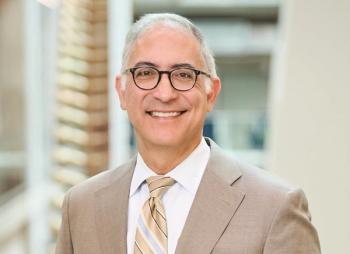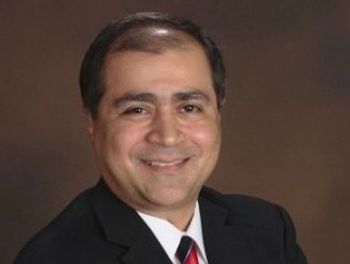
Building trust, examining data, and getting started: Leaders offer guidance on health equity
More hospitals are examining ways to improve care for underserved communities. Over the past year, these leaders shared perspectives on moving toward equity in patient care.
When listing their top objectives, hospital executives consistently cite improving health equity among their highest priorities.
It’s been a popular discussion topic at healthcare conferences over the past year. Health equity is a glaring issue in cities and rural communities around the country.
Leaders that are working in health equity speak with urgency about the need to close disparities, but they also acknowledge that such efforts will require long-term commitments.
Over the past year, Chief Healthcare Executive® has spoken with a host of leaders who are committed to improving care and outcomes for all patients, and covered a host of fascinating conversations on the topic. Health equity has been, and will continue to be, an important area of coverage for Chief Healthcare Executive.
Here are some of the most perceptive insights and observations on improving health equity from leaders across the healthcare industry over the past year. Perhaps some of their words may lead to fruitful conversation, illumination, and even inspiration.
‘Embed equity in everything’
Selwyn O. Rogers Jr., founding director of the University of Chicago Medicine Trauma Center, talked about the substantial disparity in health outcomes in Chicago during an
UChicago Medicine ranked third on the Lown’s analysis of the most racially inclusive hospitals. He talked about health equity being a central focus.
“This is constant, constant vigilance, to embed equity in everything that we do, our policies, our approaches, our access,” Rogers said.
Rogers also spoke about the importance of being “intentional,” which includes measuring key performance indicators of quality care and evaluating patient measures by race, ethnicity and socioeconomic status if possible.
“You have to be willing to measure this stuff,” Rogers said.
Equity isn’t ‘a side hustle’
As Bhatt says, “Health equity can’t be a side hustle.”
“It's got to be part of the business, embedded within your thinking, your strategy, your finance, your operations,” he says.
To move the needle on health equity, hospitals need to set clear objectives with tangible goals.
“I think you've got to have a credible, measurable strategy,” he explains. “You've got to have accountability across the board, not just with the C-suite, but with governance, with your middle management, and with employees across the organization.”
Without a well-articulated strategy, Bhatt says, “You’re not going to have success.” (Health equity leaders share their insights in this video. The story continues below.)
‘Community has all the answers’
For hospitals that are aiming to expand their health equity efforts, Cunanan stresses the importance of asking community groups what they need.
That’s a step some health systems overlook, she notes.
“I think it's really important to engage the community and community stakeholders in the strategy,” Cunanan says. “I think it's the number one thing. And that's the number one mistake that organizations have made. They've gone in to say, ‘Here's what you need,’ instead of doing a really good job listening to the community about what they need.”
“The community has all the answers,” she explains. “We just need to pay attention and listen and bring them to the table.”
Trust is easy to lose
Several healthcare leaders discussed health equity during a session at the
Mark Lodes, chief medical officer for population health and medical education at the Froedtert & the Medical College of Wisconsin health network, stressed that it’s difficult to build and maintain trust with the community.
“I think trust is earned. It’s much easier to lose a community or an individual’s trust than it is to gain it,” Lodes says.
Rosalyn Carpenter, senior vice president for diversity and inclusion and chief diversity officer for CommonSpirit Health, says engaging the community is key in building trust.
“We establish trust by showing up, by walking that talk,” Carpenter says.
Part of that effort involves closely analyzing data, from the impact of charitable donations and how they are used to supplier diversity, among a host of other measures. “This would not only enable us to tell our story, but it becomes a measure of accountability,” she says.
Equity is key to patient safety
Main Line Health has developed dashboards measuring patient outcomes in key areas such as readmissions and infections. More recently, Main Line has been able to produce data showing outcomes by race, ethnicity and type of insurance, Lynch says.
In an interview with Chief Healthcare Executive®, Lynch says if health systems are serious about improving patient outcomes, they must focus on closing disparities among those in minority groups and disadvantaged communities.
“I contended a number of years ago that you're kidding yourself if you're committed to quality and safety, and you're not committed to equity,” Lynch says. “Because what that says to me is, ‘I'm committed to safety and quality for people that look like me.’”
Look at yourself
Hospitals that are aiming to improve health equity need to consider the diversity inside their own organizations, among providers and in leadership roles.
“There has been a push, especially from the hospital and health system side, to include more of their staff and providers that look more like patients. And I think that's been very promising,” Paruk says.
“I think that goes a long way in terms of building trust with patients,” she adds. “It's good for the community. It's great for outcomes. You want to go to a provider who understands what you're going through at whatever point in life you are.”
Making equity a business priority
Ankoor Shah, a principal director and health equity lead at Accenture, says organizations need to link efforts to close disparities to their business goals.
“We're not only talking about reducing health disparities, saving lives, which is the most important thing,” Shah told Chief Healthcare Executive in
“And in this climate, those who were thinking, or who are connecting health equity, as a business priority, are the ones that are going to see it, as opposed to those who are relegating health equity to the philanthropy or marketing arm of the organization, and funding programs that don't have a sustainable path to the future, nor connected with actual long-term results of the business objectives.”
Health systems can consider tying executive compensation toward progress on health equity, he says.
“When we align executive pay and strategic goals, the execution follows,” Shah says. “There's a natural incentive for execution.”
‘Play the long game’
Hospitals and health systems must realize health equity efforts aren’t going to be achieved quickly, says Pritesh Gandhi, the chief community health officer of Walmart.
“We have to play the long game,” he told Chief Healthcare Executive® in
Gandhi concedes that making real progress on health equity is difficult, because he says there is “profound pressure” in focusing on more short-term goals.
“There are plenty of incentives to play the short game,” he says. “And we've got to take that logic and turn it on its head. The long game is a lot harder. And there is no instant gratification of playing the long game.”
Gandhi says it’s good that there are more conversations about health equity. But he says there needs to be more action.
“I think there's a concern for folks that have been in this space, that we talk so much about these issues, but it's not clear that we're actually making progress on this front,” Gandhi says.
‘Just get started’
Lawrence Moss, president and CEO of
In an
“It starts with examining, accepting and acting on their own data,” Moss says.
Hospitals and health systems, especially those with more modest resources, don’t have to try and tackle every problem area immediately, Moss says. Hospitals can choose one specific area to try to make some progress.
“There is a huge halo effect of almost whatever metric you pick, because changing that metric requires a cultural change that has a halo effect of positive influence across the health system,” Moss says.
“To me, I don't care which one you pick,” he adds. “Just get started. Measure it, report it, be transparent about it to your staff. And I would argue, be transparent about it to the public and to your community. And change is going to happen.”








































